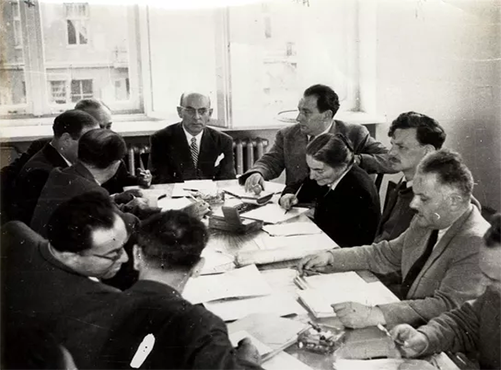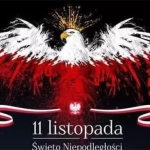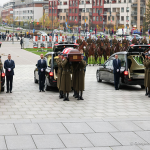As compiled by Jędrzej Lipski
The remains of three Presidents of the Polish Republic in exile were brought back to Poland from England: Władysław Raczkiewicz, August Zaleski, and Stanisław Ostrowski.
To ensure the legal and international continuity of the Polish state – this was the main objective of the Polish Government-in-exile, which operated from 1939 to 1990. The Polish Government-in-exile was a phenomenon of the Second World War period. Operating in exile, it was treated by the world’s Allied powers as the legal continuation of the authority of the Second Republic.
In September 1939, after the Third German Reich and the Soviet Union invaded Poland, the country’s authorities were forced to leave the territories of the Republic to avoid captivity and not be forced to capitulate. This happened on the night of 17-18 September 1939, when Polish President Ignacy Mościcki, Commander-in-Chief, Marshal Edward Rydz-Śmigły, and Prime Minister Felicjan Sławoj-Składkowski crossed the Polish-Romanian border to reach France. Despite the alliance agreement with Romania, the politicians were interned.
Therefore, it was necessary for the country’s continued functioning to appoint authorities beyond the aggressors’ reach. On 25 September 1939, President Ignacy Mościcki exercised the powers given to him by Poland’s April Constitution and appointed his successor, Bolesław Wieniawa-Długoszowski, the Polish Ambassador to Italy, who, unfortunately, was soon forced to resign. As a result, President Raczkiewicz appointed a government with General Władysław Sikorski as Chairman of the Council of Ministers, Minister of Military Affairs, and Minister of Justice. Initially, the seat of the government was Paris, and later in Angers.
In December 1939, the government issued a declaration formulating the most important objectives of its activities in exile, namely: fighting for the independence and integrity of the Republic of Poland in alliance with France and the United Kingdom, victory over the Third Reich, and the creation of the Polish Armed Forces in the West. In the spring of 1940, the 1st Grenadier Division, the 2nd Infantry Rifle Division, the Independent Podhale Rifle Brigade, and the Polish Air Force were established in France. After the capitulation of France in the spring of 1940, the Polish authorities accepted the invitation of Prime Minister Winston Churchill and moved their headquarters to London.
The Polish Government in London ruled over the civil and military underground in occupied Poland: the civil administration of the Government Delegation for Poland, the Union of Armed Struggle, and the Home Army. In August 1940, under a Polish-British military agreement, it was possible to create the I Polish Corps in 1942 and the I Armored Motor Corps, the Independent Parachute Brigade, and the 1st Armored Division.
In June 1941, Germany attacked the USSR, which changed the war’s fate. Britain proposed an alliance to the USSR, and Polish-Soviet talks also began, resulting in the Sikorski-Mayski Agreement being signed on 30 July 1941. It stipulated, among other things, mutual assistance against German forces, permission for the creation of a Polish army in the USSR and the restoration of diplomatic relations between the countries. This agreement caused a severe crisis in the government, leading to the resignation of, among others, Foreign Minister August Zaleski and a split in the foreign coalition.
In July 1945, the Republic’s previous allies – the United Kingdom, the United States, and France – withdrew diplomatic recognition of the Polish Government-in-exile, recognizing the formation of the Provisional Government of National Unity. Earlier, in June, the government of Tomasz Arciszewski had rejected the provisions of the Tehran and Yalta Conferences regarding the establishment of a Polish Government recognized by all the countries of the so-called Big Three (the USA, Great Britain, and the USSR). In a note to the victorious states, he stated that he could only delegate his constitutional powers to a government elected in free elections at home. Ireland, Spain, and the Vatican were the last countries to recognize the Polish Government-in-exile (until 1972).
Under the April Constitution of 1935, the head of state was the President of the Republic. The continuity of this office was not interrupted by the outbreak of war or the internment of President Ignacy Mościcki.
The existence of the Polish government and the activities of the Polish Presidents in exile gave Poles hope that their Homeland would finally regain its freedom after the hard years of occupation and totalitarianism. The office was held successively by Władysław Raczkiewicz, August Zaleski, Stanisław Ostrowski, Edward Raczyński, Kazimierz Sabbat, and Ryszard Kaczorowski. From September 1939 to December 1990, six statesmen held office. Who were the people whose lives exemplify loyalty and devotion to their Homeland, people who loved their country so much that they never gave up trying to liberate it from Soviet occupation?
Władysław Raczkiewicz. Wartime President
He was born in 1885 in Kutaisi, Georgia, where his grandfather had settled to serve part of his sentence after taking part in the January 1863 Uprising. In the Second Republic, he was one of the prominent politicians, serving three times as Minister of the Interior and Voivode and Speaker of the Senate. After the defeat of the September 1939 Campaign, Ignacy Mościcki appointed him as his successor as President (after the resignation of Bolesław Wieniawa-Długoszowski).
On 30 September 1939, he was sworn in as President of the Republic of Poland in Paris – thus becoming the first President of the Republic of Poland in exile. By assuming the post of head of state in exile – deprived of territory but recognized by the Allies – he took responsibility for the struggle to regain independence. After the defeat of France in June 1940, he moved with his government to the United Kingdom. In December 1942, he sent a letter to Pope Pius XII asking the Vatican to rebuke the persecuted Poles and Jews. After the war’s end, he did not resign his office, thus prolonging the sovereign statehood of the Second Republic, even though the international community broadly recognized the legality of the communist authorities in Poland. He died on 9 June 1947 in Ruthin, Wales.
August Zaleski. The longest-serving President of the Republic of Poland in Exile
He was born in 1883 in Warsaw and was a politician and diplomat, serving twice as Foreign Minister. In June 1947, after the death of Władysław Raczkiewicz, he assumed the office of President of the Republic of Poland in Exile. The arbitrary extension of his term of office led to disputes and permanent divisions among the émigré elite, as well as the creation of the Council of Three – an opposition center ascribing to itself the powers of the Head of State. Zaleski appointed Stanisław Ostrowski as his successor. After his death on 7 April 1972, the Council of Three dissolved, recognizing the legitimacy of his appointment.
Stanislaw Ostrowski. A soldier who became President.
He was born in 1892 in Lwów (today: Lviv) and was the son of a January Uprising insurgent. A doctor by profession, he was a soldier of the Legions and the Polish Army during World War I. Before the Second World War, he was a member of the Sejm and the Mayor of Lwów from 1936-1939. After the outbreak of World War II, he was arrested and imprisoned by the NKVD in Lwów and Moscow. He was released under amnesty after the Sikorski-Mayski agreement. He joined the Anders Army, made his way out of the Soviet Union, and partook in the entire combat struggle till the war’s end. After the war, he settled in Great Britain, where he practiced medicine, participated in the political and social life of the emigration, and was a member of scientific societies and organizations. In 1972, he assumed the office of President of the Republic of Poland in Exile, which he held until 1979. He died on 22 November 1982 in London.
Edward Bernard Raczynski. His life is a testimony that #politics #is #service to the country.
He was born in 1891 in Zakopane to a well-known family from the Greater Poland region and later obtained a doctorate in law at Jagiellonian University. A diplomat, he was the Polish ambassador to Great Britain from 1934. Based on documents delivered to London by courier Jan Karski and confirmed by his testimony, Edward Raczyński prepared and presented a detailed report on the Holocaust to the Allies. In August 1944, he unsuccessfully appealed for help for the Warsaw Uprising of 1944. After the end of the Second World War, he remained in exile, serving as the unofficial representative of the Polish authorities to the British government. In 1979, he assumed the office of President of the Republic of Poland in Exile, which he held until 1986. Edward Raczyński was the oldest (he took office at the age of 95) and the longest-surviving (101 years) President of the Republic of Poland. He died on 30 July 1993 in London.
Kazimierz Sabbat. One of the most eminent political émigré activists.
He was born in 1913 in Bieliny Kapitulne and graduated in law, which he studied at the University of Warsaw. He was a scout and a participant in the 1939 defensive war. After the evacuation of the Polish Army to Great Britain, he served in General Stanisław Maczek’s 10th Armoured Cavalry Brigade in Scotland and, later, in the General Staff of the Polish Armed Forces. After the war, he remained in the UK, worked socially, and took an active part in the political life of the emigration. From 1976 to 1986, he was Prime Minister of the Polish Government-in-exile. In 1986, he assumed the office of President of the Republic of Poland in Exile. He died suddenly in London in July 1989.
Ryszard Kaczorowski. A man whose life was one of service.
He was born in 1919 in Białystok. From an early age, he was involved in the scouting movement. In 1940 he was arrested by the NKVD and sentenced to death. After a hundred days on death row, the USSR authorities commuted his sentence to 10 years in a labor camp. He remained in Kołyma until the signing of the Sikorski-Mayski Agreement, thanks to which he was released. In 1942, he joined the Polish Army in the USSR and fought, among other sites, at Monte Cassino. After the war ended, he settled in Great Britain. He took office as Head of State in 1989.
Because he regarded the presidential election in 1990 as an expression of freedom and democracy achieved by Poland, he decided to end the Polish Government-in-exile.
He died tragically in the Smoleńsk Air Crash in 2010 – on his way to the anniversary celebrations of the Katyń Massacre.
The main merit of the Presidents of the Republic of Poland in Exile was the preservation of the constitutional continuity of the authorities of the Republic of Poland from September 1939, when the aggression of Germany and the USSR against Poland took place, through the entire Second World War and the post-war Soviet occupation, until Poland’s first entirely free presidential elections in 1990.
The mission of the Presidents-in-exile was concluded with the ceremonial handing over of the presidential insignia at the Royal Castle in Warsaw in 1990. Ryszard Kaczorowski – the last President of the Republic of Poland in exile – handed them over to Lech Wałęsa – the first Polish President elected by popular vote after World War II.
Return to the Homeland
The remains of the first three Presidents have been brought to Poland who earlier rested at the Polish Airmen’s Cemetery in Newark, UK. Their remains will be ceremonially deposited in the Mausoleum of the Presidents of the Republic of Poland in Exile, built in the Temple of Divine Providence in Warsaw. Ryszard Kaczorowski and his wife will also be buried with them.
“Until now, we have not had a place in Poland commemorating the merits of the Polish Presidents in Exile for Polish freedom in the years 1939-1990. Now such a place will appear on the map of Poland. This undertaking represents repayment of a debt to Polish emigration, which stood steadfastly for independence for half a century after the end of the Second World War. The authorities of the Republic of Poland want the memory of the mission of the Presidents of the Republic of Poland in Exile to become permanently embedded in the consciousness of Poles”, says Jan Dziedziczak, Government Plenipotentiary for Polonia and Poles Abroad from the Chancellery of the Prime Minister.
This particular solution, in the form of exercising the power of the Second Republic in exile, was allowed – under the April Constitution of 1935 – for the continuity of institutional state power during the Second World War and later when Poland was under communist rule. For over 50 years, the government-in-exile was also concerned with maintaining Polish traditions, culture, and literature in the émigré community. There were émigré publishing houses, bookshops, and libraries in London. A Polish-language press was published. As a center of emigration, ‘Polish London’ was one of the world’s largest concentrations of the Polish diaspora, next to Chicago, New York, or Paris,
explains Karol Polejowski, Deputy President of the Institute of National Remembrance, who is one of the organizers of the project.
Bringing back the Memory
Despite the significant role played by the Polish Presidents in Exile in restoring democracy in Poland, their story is little known today. This is confirmed by research conducted in August 2022. Only one in ten Poles can correctly identify how many Presidents of the Republic of Poland in Exile there have been.
The most recognizable President of the Republic of Poland in Exile is Ryszard Kaczorowski, with just over 60 percent of correct indications. On the other hand, only 23% of respondents correctly indicated the first President of the Republic of Poland in Exile – Władysław Raczkiewicz. One in five respondents does not know the date when the government of the Republic of Poland in exile was formed, and more than 70 percent of respondents could not indicate who the first Prime Minister of the Republic of Poland in exile was.
Research shows that the younger the respondents, the less knowledge they have about the activities of the Presidents of the Republic of Poland in Exile. At the same time, a 2018 CBOS survey shows that nine out of ten Poles consider themselves patriots, and as many claims that an expression of patriotism is knowledge of the history of one’s country.
“Poles are united by pride in the history of our country, all the more reason why the history of the Presidents of the Republic of Poland in Exile deserves to be remembered today. For this reason, we have launched an educational campaign under the slogan ‘Mission: Free Poland’. The aim of the campaign is, first and foremost, to raise the level of Poles’ knowledge of the history of the Presidents and the Polish Government in Exile, the most important historical figures and facts, and to raise awareness of the importance of this part of history for maintaining the continuity of Polish statehood and national identity. This chapter of our history deserves wise, long-term action,” says Mikołaj Falkowski, President of the ‘Aid to Poles in the East’ Foundation, which is the project’s organizer.
The project is under the National Patronage of the President of the Republic of Poland, Andrzej Duda, on the Centenary of the Regaining of Independence. The project is under the Honorary Patronage of Prime Minister Mateusz Morawiecki. The initiative is being implemented by the Foundation ‘Helping Poles in the East’ in cooperation with the Chancellery of the Prime Minister, the Institute of National Remembrance, the Divine Providence Centre, the Ministry of National Defence, the Ministry of Foreign Affairs and the Office of the ‘Niepodległa’ Program.
Translation: J. Czarniecki
For the original text in Polish, please see:
https://dziennikzachodni.pl/misja-wolna-polska-powrot-prezydentow-do-kraju/ar/c1-17033541



